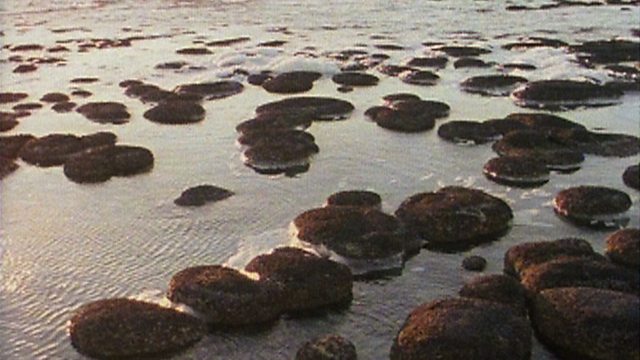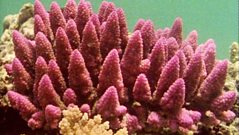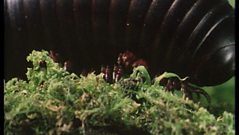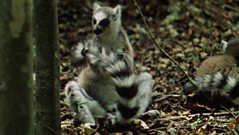
Signs of first life
Shark Bay's stromatolites offer a glimpse into the past when life first began.
Shark Bay's stromatolites offer a glimpse into the past when life first began.
Some blue-green algae (cyanobacteria) deposit lime as they grow and, in one place in the world - Shark Bay in Western Australia - they grow into stubby pillars in the sea, called stromatolites.
The reason for this is that the mouth of the bay is almost blocked by a bar of sand covered by sea grass, so there isn't much flow in and out, and the water in the bay is extremely salty.
Because of this, none of the creatures that would normally eat blue-greens can survive in the bay, so the very primitive organisms are free to grow uncropped, just as they did when they were the most advanced form of life 2,000 million years ago.
On the shores of Lake Superior, the fossilised remains of these stubby pillars are still visible on the ground, but at Shark Bay we have the best glimpse of what it may have been like when life first began.
The oxygen from these life forms then formed a layer of ozone in the atmosphere, screening off the ultraviolet, the very energy source that had helped to create the first forms of life, so it could never begin in the same way again.
Duration:
This clip is from
Featured in...
![]()
±«Óãtv Nature
Be captivated, informed and inspired by the world's wildlife.
More clips from The Infinite Variety
-
![]()
Skins alive!
Duration: 01:30
More clips from Life on Earth
-
![]()
Lucky pups—The Rise of the Mammals
Duration: 03:29
-
![]()
Millennia of millipedes—The First Forests
Duration: 01:50
-
![]()
Creatures of the night—Life in the Trees
Duration: 01:16
-
![]()
Scent sense—Life in the Trees
Duration: 02:55







